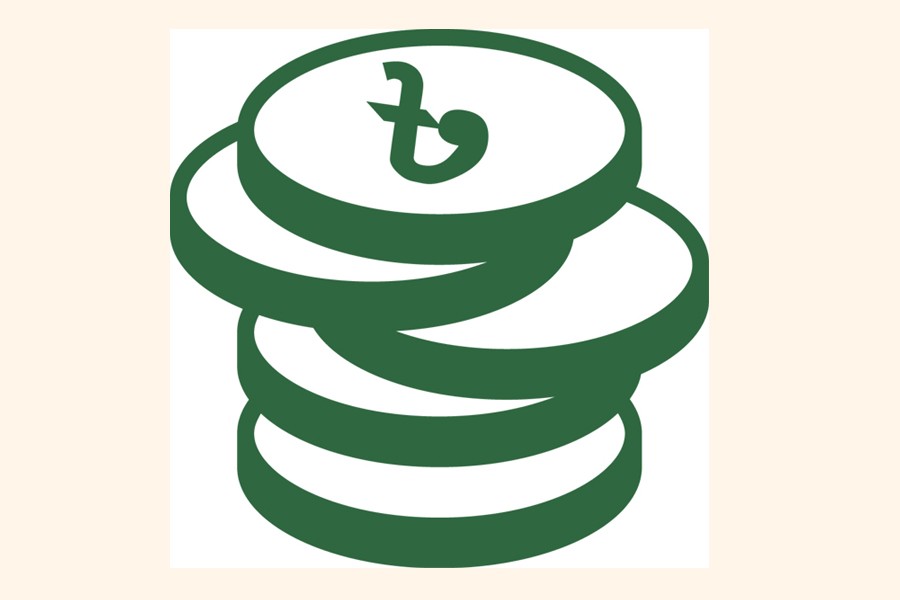
The interest rate on term deposits has reached double digit after about a couple of years as the banks are now out of comfort zone, as far as their liquidity position is concerned.
The overall deposit rates started creeping up since the beginning of this calendar year, primarily due to withdrawal of funds from private banks by a section of depositors, including public sector agencies.
The withdrawal, according to sector insiders, has resulted in a notable shortage of liquidity in the sector.
The problems centring the Farmers Bank Ltd (FBL) and scams one after another have created a sort of crisis of confidence in the banking industry. Most state-owned enterprises are now reluctant to keep their funds with the private commercial banks (PCBs) that are suspected to be weak, fundamentally.
Some SoEs particularly oil and gas distribution companies have already withdrawn a part of their special notice deposits from PCBs, according to banking sector insiders.
They said the PCBs that face withdrawal pressure are now offering interest rates as high as 10.50 per cent in the case of time deposits.
The rate was at this level in 2015, according to banking sources.
On an average, the term deposit rates are now hovering between 9.00 per cent and 10.00 per cent, they added.
The PCBs are forced to offer higher rates to comply with the funded commitments to their clients as par respective schedules, they explained.
The situation emerged after the Farmers Bank's declined the encashment of a fixed deposit worth over Tk 5.08 billion due to liquidity shortage.
The money belongs to the Climate Change Trust Fund (CCTF).
After the incident, the government fund managers particularly of power, energy and gas sectors are exercising caution while depositing funds with different PCBs.
"We've deposited our funds with both public and private banks in line with the existing limit, set by the finance ministry," Syed Shahriyar Ahsan, managing director of state-run Sadharan Bima Corporation, told the FE Sunday.
Currently, the state agencies are allowed to deposit 75 per cent of their funds with the public banks and rest 25 per cent with the PCBs.
"Yes, we feel a bit shaky about the PCBs after the FBL incident," he admitted. "We've to be selective in depositing the public money."
Sources, however, said the state-owned energy companies withdrew Tk 6.0 billion from a third-generation PCB in February.
"We're facing extra liquidity pressure because of the withdrawals," a senior executive at a third-generation PCB said.
He said his bank was trying to collect funds from other banks, non-governmental organisations (NGOs) and other corporate entities, offering higher rates on term deposits to meet their liquidity need.
Another state-owned gas exploration company is withdrawing funds from a second-generation PCB each month to implement a project, according to an executive of another bank.
The gas exploration company withdrew Tk 5.0 billion from the PCB in February 2018, he added. This bank offered 10.50 per cent for term deposits.
Earlier on February 17, Bangladesh Bank (BB) Governor Fazle Kabir at a function sought the finance minister's intervention to stave off withdrawal pressure coming from the state-entities.
However, flow of funds from individual depositors has lately gathered pace due to higher rates being offered by banks.
"If deposit rates are higher, individuals prefer keeping their hard-earned money with the banks than investing into government savings instruments," a senior private banker said.
Explaining, he said the investment in savings certificates is still a good avenue for getting higher returns than that of the banks' offer. "But the problem with savings schemes is that it is a long-term investment and beneficiaries cannot encash it as and when they need it," the private banker explained.
On the other hand, the wide gap between the credit and deposit growth continued in 2017 as many people with surplus funds stayed away from banks due to lower interest rates. The deposit growth had been on a slide, falling from 13.13 per cent on December 31, 2016 to 10.94 per cent on June 30, 2017 and 10.62 per cent on December 31 last.
On the other hand, growth of private sector credits climbed to 18.10 per cent as on December 31 from 15.98 per cent on June 30 last calendar year. It was 15.32 per cent as on December 31, 2016.
However, the increase in deposit rates has left its consequent effect on lending rates. The rate has increased 2.0 per cent on the average.
The central bank had taken different measures, including slashing the limit of advance-deposit ratio (ADR), recently to gradually improve the overall deposit situation.
Meanwhile, the interest rate spread in the banking sector decreased in January due to increase in deposit rate more than that of lending, officials said.
The weighted average spread between lending and deposit rates came down to 4.41 per cent in January 2018 from 4.44 per cent in the previous month, according to the central bank's latest statistics. It was 4.72 per cent in January 2017.
The weighted average rates on deposits rose to 5.01 per cent in January last from 4.91 per cent in the previous month while interest on lending stood at 9.42 per cent against 9.35 per cent, the BB data showed.
siddique.islam@gmail.com
© 2025 - All Rights with The Financial Express
